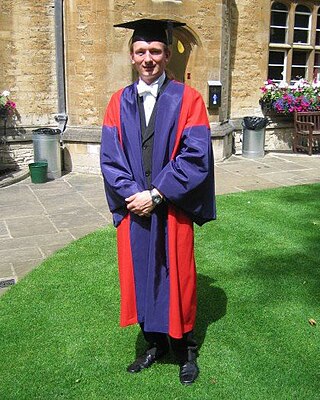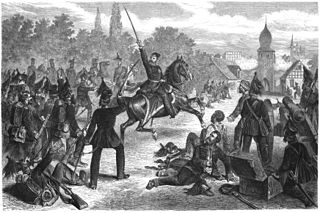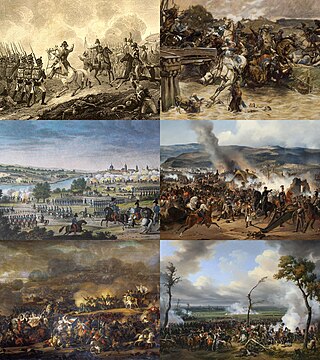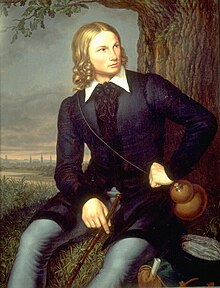
The French Resistance was a collection of groups that fought the Nazi occupation and the collaborationist Vichy regime in France during the Second World War. Resistance cells were small groups of armed men and women who conducted guerrilla warfare and published underground newspapers. They also provided first-hand intelligence information, and escape networks that helped Allied soldiers and airmen trapped behind Axis lines. The Resistance's men and women came from many parts of French society, including émigrés, academics, students, aristocrats, conservative Roman Catholics, Protestants, Jews, Muslims, liberals, anarchists, communists, and some fascists. The proportion of French people who participated in organized resistance has been estimated at from one to three percent of the total population.

There are typically two types of clothing worn in Japan: traditional clothing known as Japanese clothing, including the national dress of Japan, the kimono, and Western clothing which encompasses all else not recognised as either national dress or the dress of another country.

Cheongsam or zansae, also known as the qipao and sometimes referred to as the mandarin gown, is a Chinese dress worn by women which takes inspiration from the qizhuang, the ethnic clothing of the Manchu people. The cheongsam is most often seen as a longer, figure-fitting, one piece garment with a standing collar, an asymmetric, left-over-right opening and two side slits, and embellished with Chinese frog fasteners on the lapel and the collar. It was developed in the 1920s and evolved in shapes and design over years. It was popular in China from the 1920s to 1960s, overlapping with the Republican era, and was popularized by Chinese socialites and high society women in Shanghai. Although the cheongsam is sometimes seen as traditional Chinese clothing, it continues to evolve with the times, responding to changes in contemporary modern life.

A waistcoat or vest is a sleeveless upper-body garment. It is usually worn over a dress shirt and necktie and below a coat as a part of most men's formal wear. It is also sported as the third piece in the traditional three-piece male suit. Any given waistcoat can be simple or ornate, or for leisure or luxury. Historically, the waistcoat can be worn either in the place of, or underneath, a larger coat, dependent upon the weather, wearer, and setting.

Academic dress is a traditional form of clothing for academic settings, mainly tertiary education, worn mainly by those who have obtained a university degree, or hold a status that entitles them to assume them. It is also known as academical dress, academicals, or academic regalia.

Lützow Free Corps was a volunteer force of the Prussian army during the Napoleonic Wars. It was named after its commander, Ludwig Adolf Wilhelm von Lützow. The Corpsmen were also widely known as the “Lützower Jäger“ or “Schwarze Jäger“, sometimes also "Lützower Reiter".

A dirndl is a feminine dress which originated in German-speaking areas of the Alps. It is traditionally worn by women and girls in some Alpine regions of Austria, Germany, Italy, Liechtenstein and Switzerland. A dirndl consists of a close-fitting bodice with a low neckline, a blouse worn under the bodice, a wide high-waisted skirt and an apron.
Clerical clothing is non-liturgical clothing worn exclusively by clergy. It is distinct from vestments in that it is not reserved specifically for use in the liturgy. Practices vary: clerical clothing is sometimes worn under vestments, and sometimes as the everyday clothing or street wear of a priest, minister, or other clergy member. Eastern Orthodox clerical clothing is a subset of a monk's habit.

The first Wartburg Festival was a convention of about 500 Protestant German students, held on 18 October 1817 at the Wartburg castle near Eisenach in Thuringia. The former refuge of reformer Martin Luther was considered a national symbol and the assembly a protest against reactionary politics and Kleinstaaterei.

The Befreiungshalle is a neoclassical monument on the Michelsberg hill above the town of Kelheim in Bavaria, Germany. It stands upstream of Regensburg on the river Danube at the confluence of the Danube and the Altmühl, i.e. the Rhine–Main–Danube Canal. It is just downstream of the Danube Gorge, towering above its lower end. It was commissioned by King Ludwig I of Bavaria to commemorate the victory over Napoleon in the Befreiungskriege of 1813–1815.

Fashion in the period 1550–1600 in European clothing was characterized by increased opulence. Contrasting fabrics, slashes, embroidery, applied trims, and other forms of surface ornamentation remained prominent. The wide silhouette, conical for women with breadth at the hips and broadly square for men with width at the shoulders had reached its peak in the 1530s, and by mid-century a tall, narrow line with a V-lined waist was back in fashion. Sleeves and women's skirts then began to widen again, with emphasis at the shoulder that would continue into the next century. The characteristic garment of the period was the ruff, which began as a modest ruffle attached to the neckband of a shirt or smock and grew into a separate garment of fine linen, trimmed with lace, cutwork or embroidery, and shaped into crisp, precise folds with starch and heated irons.

Fashion in the period 1795–1820 in European and European-influenced countries saw the final triumph of undress or informal styles over the brocades, lace, periwigs and powder of the earlier 18th century. In the aftermath of the French Revolution, no one wanted to appear to be a member of the French aristocracy, and people began using clothing more as a form of individual expression of the true self than as a pure indication of social status. As a result, the shifts that occurred in fashion at the turn of the 19th century granted the opportunity to present new public identities that also provided insights into their private selves. Katherine Aaslestad indicates how "fashion, embodying new social values, emerged as a key site of confrontation between tradition and change."

Fashion in the period 1500–1550 in Europe is marked by very thick, big and voluminous clothing worn in an abundance of layers. Contrasting fabrics, slashes, embroidery, applied trims, and other forms of surface ornamentation became prominent. The tall, narrow lines of the late Medieval period were replaced with a wide silhouette, conical for women with breadth at the hips and broadly square for men with width at the shoulders. Sleeves were a center of attention, and were puffed, slashed, cuffed, and turned back to reveal contrasting linings.

The Brunswick Ducal Field-Corps, commonly known as the Black Brunswickers, was a volunteer military unit raised by Frederick William, Duke of Brunswick-Wolfenbüttel during the Napoleonic Wars. The Duke was a strong opponent of Napoleon's occupation of German territory. Formed in 1809 when war broke out between the First French Empire and the Austrian Empire, the unit initially consisted of approximately 2,300 infantrymen and cavalrymen before incorporating a number of artillery troops.

The Battle of Möckern was a series of heavy clashes between allied Prusso-Russian troops under Wittgenstein and Napoleonic French forces south of Möckern. It occurred on 5 April 1813. It ended in a French defeat and formed the successful prelude to the "Liberation War" against Napoleon.

The German campaign was fought in 1813. Members of the Sixth Coalition, including the German states of Austria and Prussia, plus Russia and Sweden, fought a series of battles in Germany against the French Emperor Napoleon, his marshals, and the armies of the Confederation of the Rhine – an alliance of most of the other German states –, which ended the domination of the First French Empire.
When Luxembourg was invaded and annexed by Nazi Germany in 1940, a national consciousness started to emerge. From 1941 onwards, the first resistance groups formed in secret, operating underground and in defiance of the German occupation. Their covert activities included aiding political refugees and those evading conscription into the German forces, as well as disseminating patriotic leaflets to bolster the Luxembourgish population's spirits.

Heinrich Ludwig Theodor Giesebrecht was a German poet and historian.

Baeja is a type of traditional Korean vest which is worn over the jeogori by both men and women. It is generally sleeveless; however some baeja may have short sleeves. It was worn during the Joseon period and continues to be worn in present days. During the Joseon period, some forms of baeja were also introduced from China's Ming dynasty as bestowed clothing to the royal family.

In the Battle of Lüneburg on 2 April 1813, Allied Russians and Prussians were victorious over a French and Saxon division. The battle was the first major combat action after the retreat of the defeated French in Russia behind the Elbe. Its importance lay in the moral effect on the German public as the first success of the Allies in the wars of liberation that were now beginning.




















